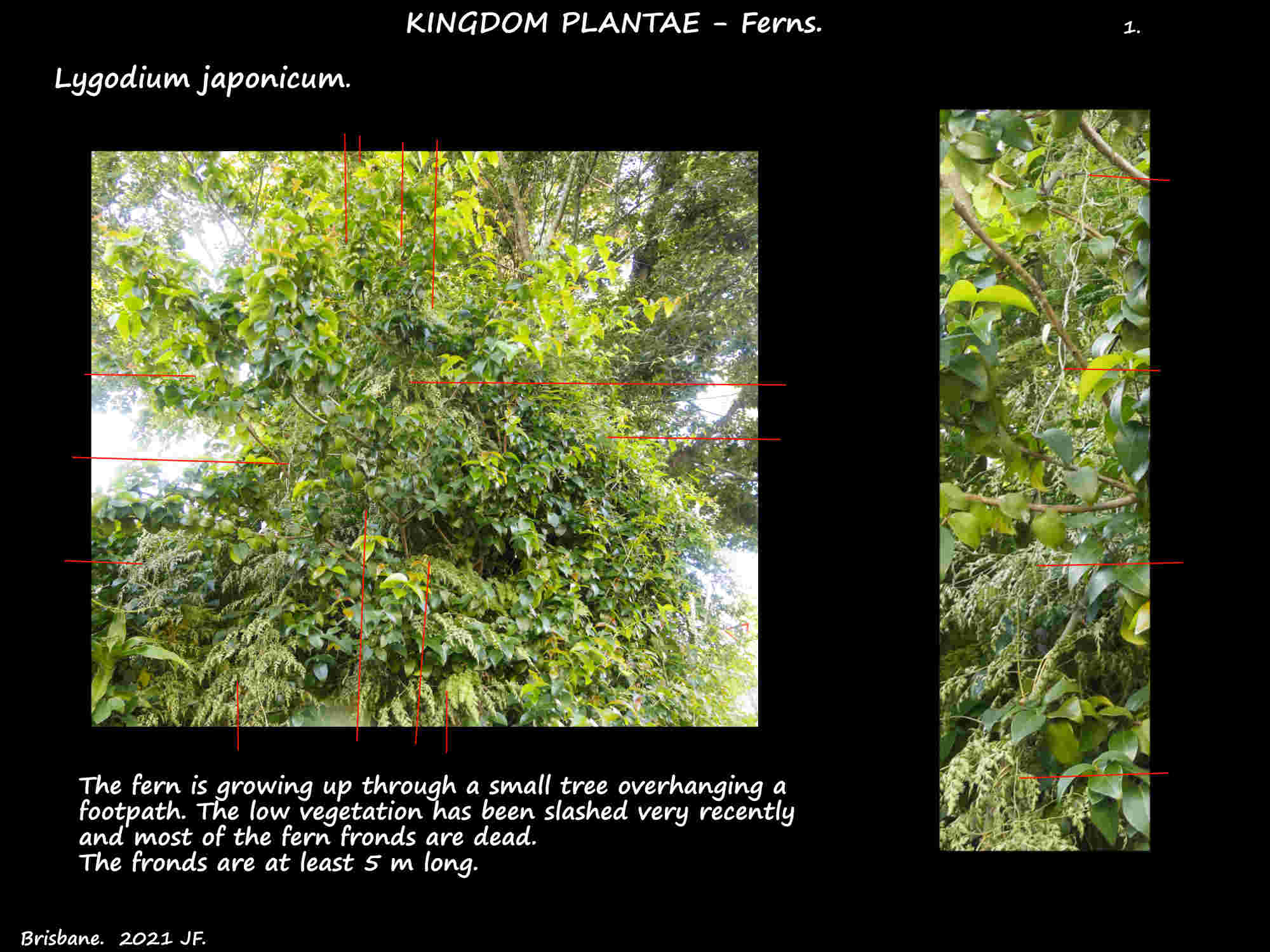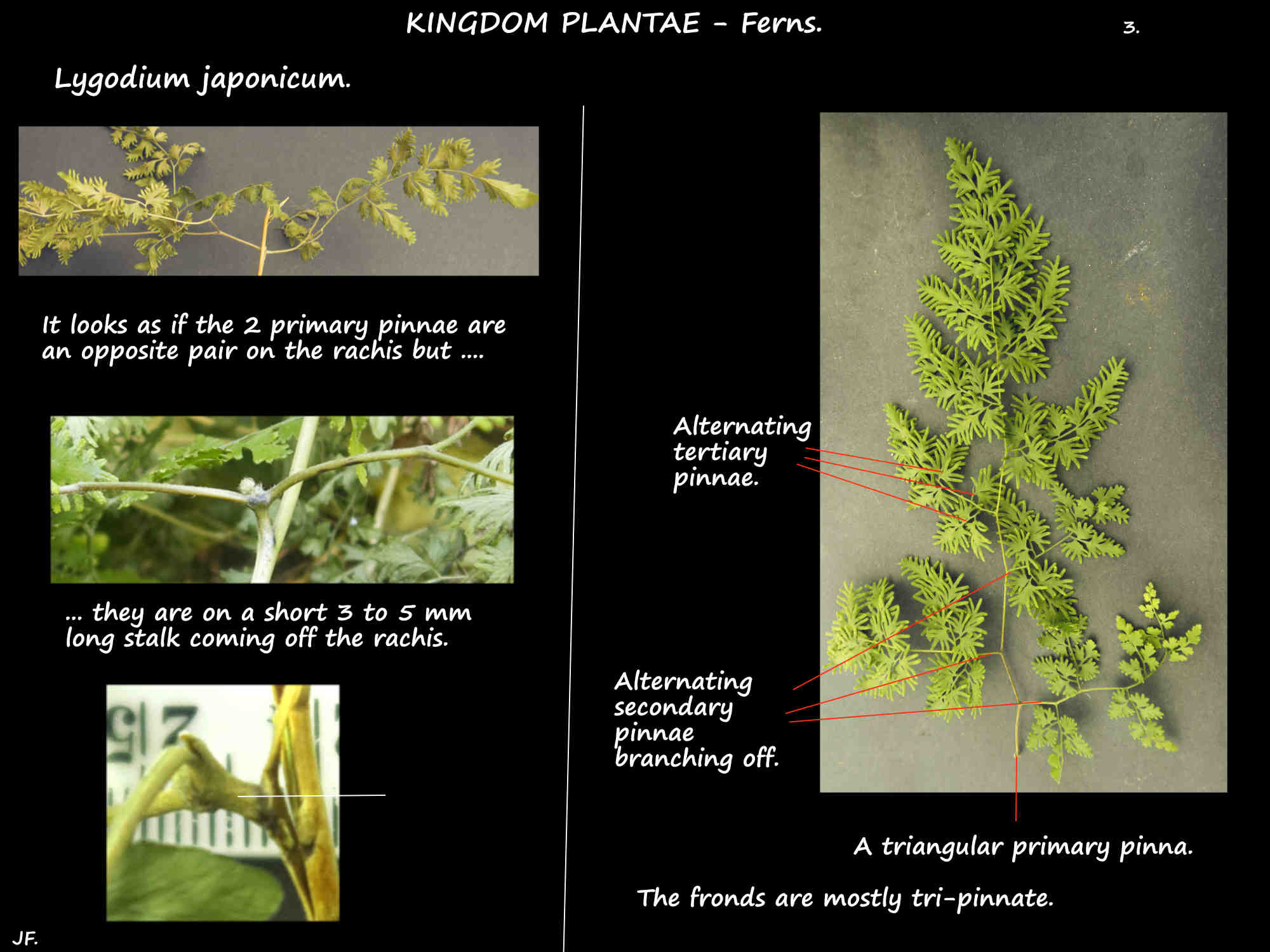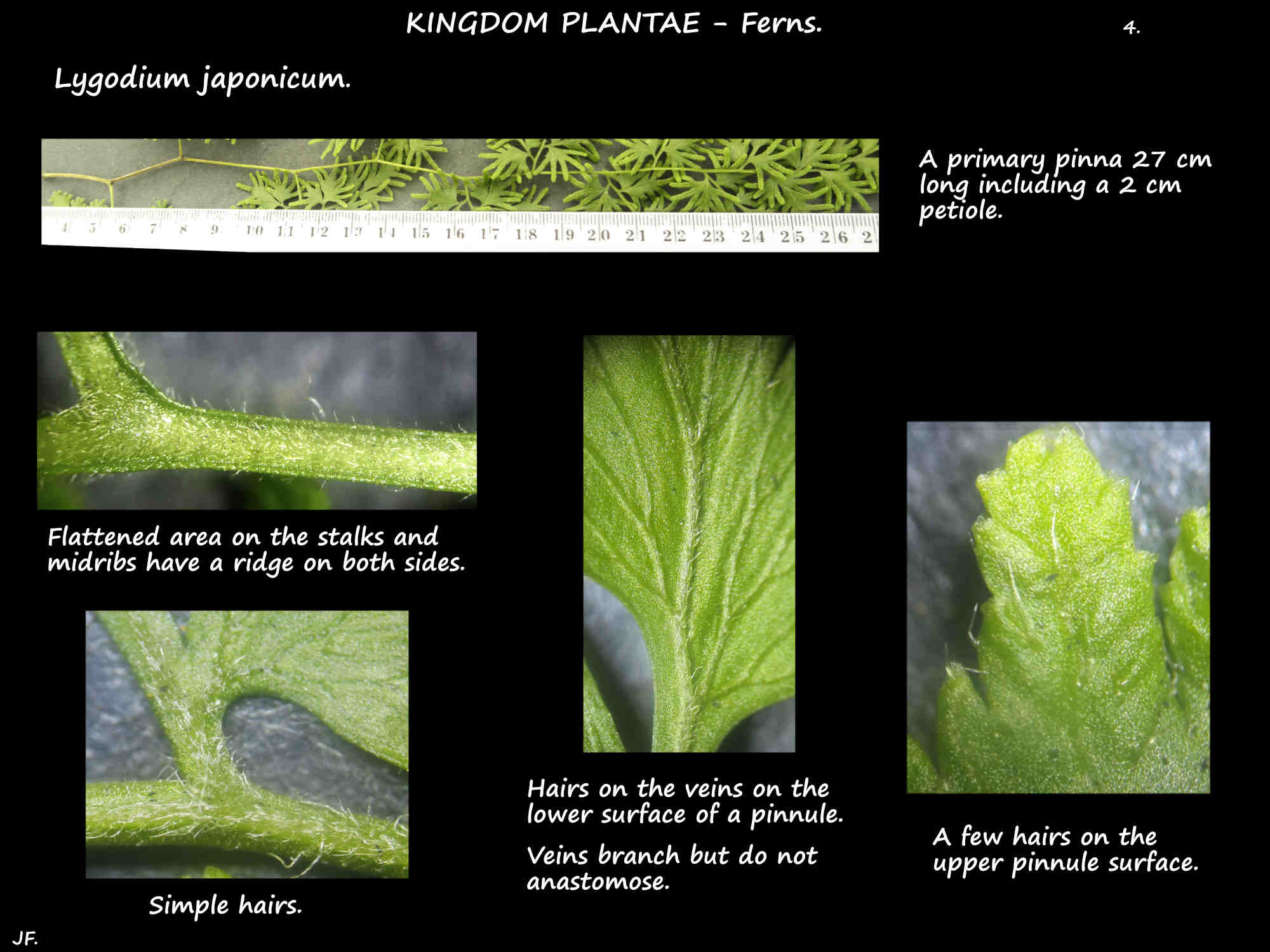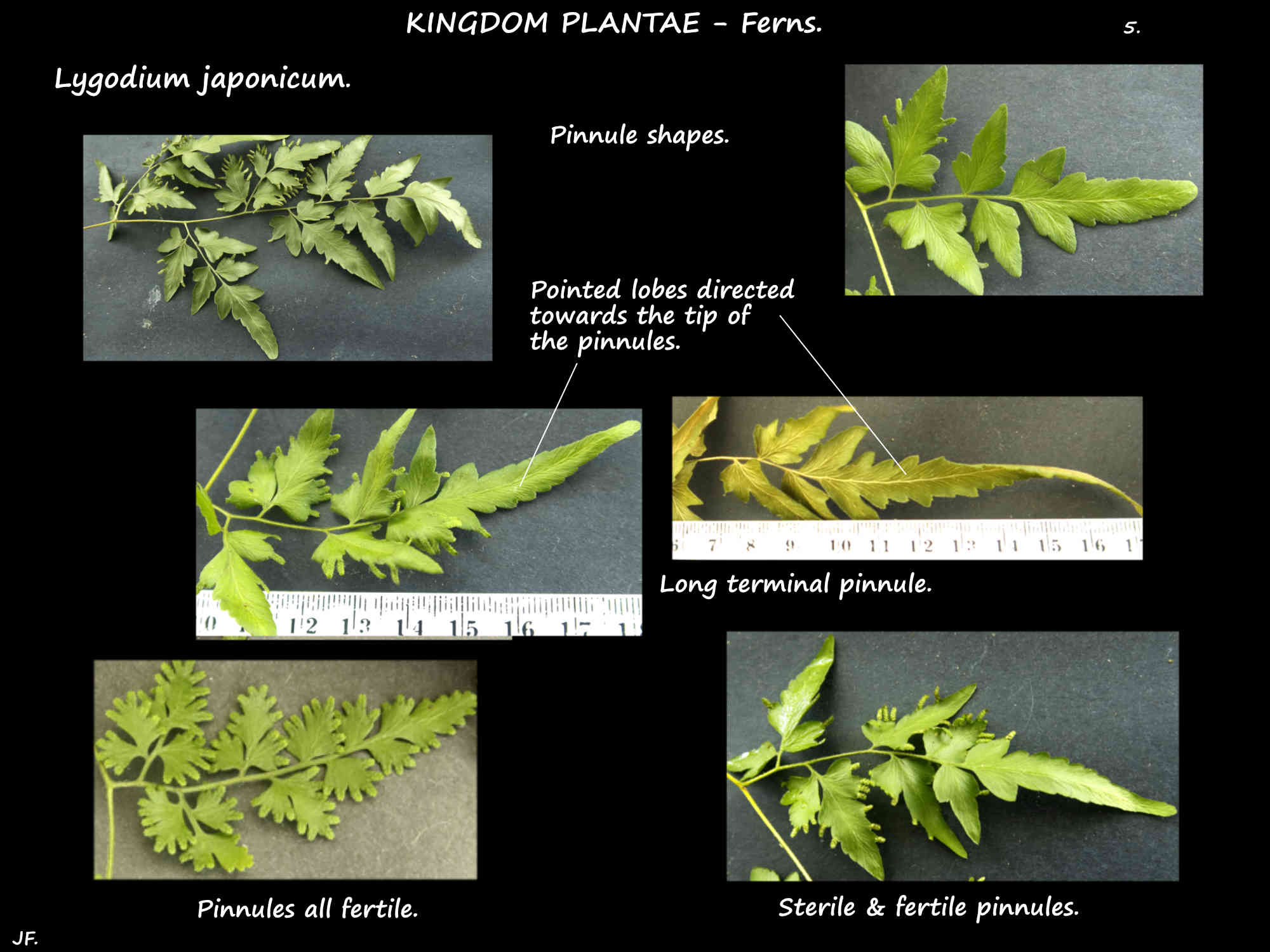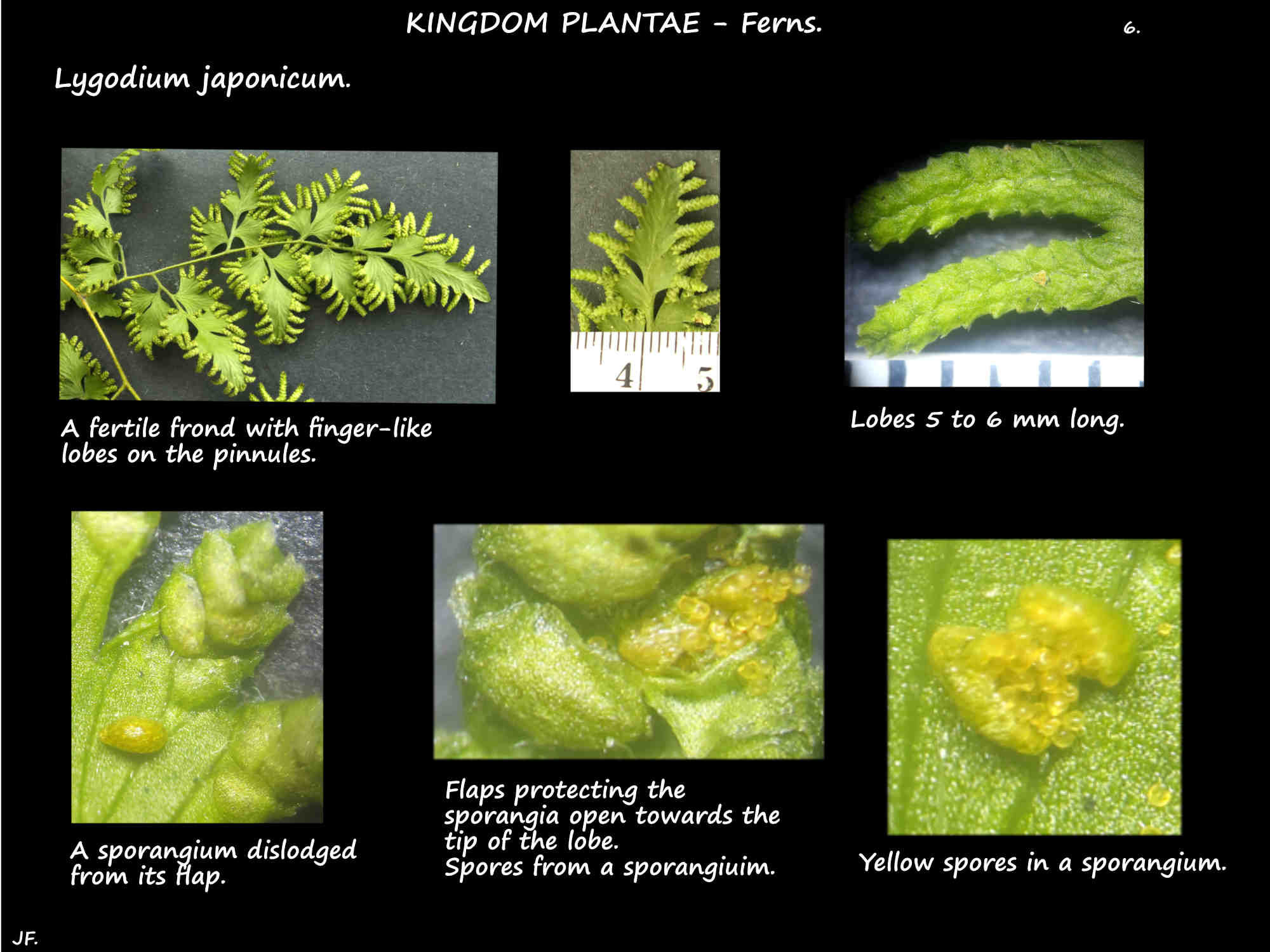Lygodium japonicum.
Japanese climbing fern is native to eastern Asia.
Naturalised in some areas of Queensland it has become an environmental weed as it can smother other vegetation.
The perennial plants grow from deep and extensive rhizomes with black or brown hairs.
Fronds growing from the rhizome can be up to 30 m long.
They have a thin and tough midrib or rachis that can be black, green or reddish.
Fronds twine around, or clamber over vegetation or twine around other fronds for support.
One side of the frond rachis is slightly flattened and it may have a few hairs.
All the pinnae stalks and midribs have an obvious flattened strip with a ridge on each side.
They have some simple hairs.
The primary pinnae are 10 to 15 cm apart along the frond rachis.
At a glance it looks as if the pinnae are arranged in opposite pairs along the rachis.
A closer look shows there is a single stalk only 3 to 5 mms long that divides into the 2 pinnae.
These primary pinnae divide into secondary pinnae and these may divide into tertiary pinnae.
The segments in the terminal or ultimate pinnae are called pinnules.
The stalks of the primary pinnae are up to 5 cm long, the secondary around 1 cm and the tertiary are under 1 cm.
Most pinnae are tri-pinnate but some are bi-pinnate.
The pinnae are triangular to lanceolate.
On the fern I saw the primary pinnae were up to 27 cm long, the secondary up to 13 cm and the tertiary a few cms.
The shape of the pinnules varies from lanceolate to ovate.
The sterile pinnules have pointed lobes that are directed towards the tip.
They usually have an elongated terminal lobe.
Sterile pinnules tend to be larger than the fertile ones.
Fertile pinnules have narrow finger-like lobes with the sporangia on their lower surface.
There are 2 rows of sporangia with one along each edge of the lobes.
There are up to 8 pairs of sporangia on each lobe and each is on, or at the end of, a vein.
Each sporangium is protected by a flap of tissue that opens towards the tip of the segment.
The spores develop in the sporangia.
The ferns also reproduce vegetatively from the rhizomes.
J.F.
